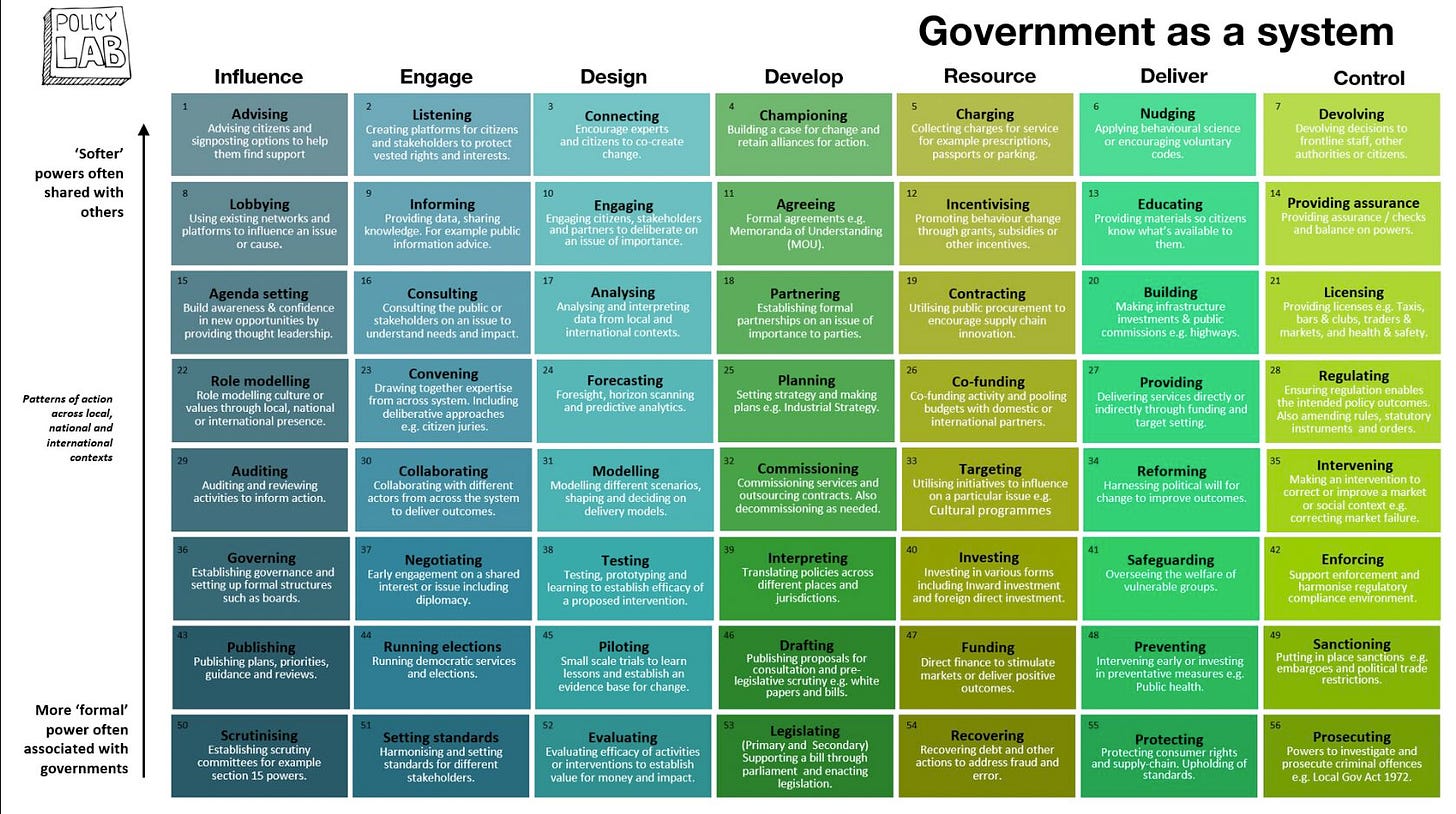The Control Trap: Why Your Transformation Is Being Crushed By Its Own Mechanisms
Your transformation initiative is on the brink. You're seeing progress on the dashboard: project milestones met, training sessions completed, compliance checks enforced. Yet adoption is stalled, operational drag is mounting, and execution costs are going up.
The real problem isn't a skill gaps. It's a systemic imbalance in your organization's change architecture. You're leaning too hard on formal control levers (compliance, oversight, directives) while neglecting the informal influence levers that drive sustainable behavior change. This creates friction that drags down strategic outcomes, making your organization vulnerable to competitors who execute faster.
A framework from the UK Government Policy Lab shows this blind spot clearly. It maps out numerous levers from soft influence to hard control, revealing how organizations typically cluster their efforts in the formal control quadrant. Regulatory compliance and policy enforcement might force behaviors in the short term, but rarely create the commitment needed for lasting change.
The Lever Imbalance: A Strategic Risk
Let’s consider a global logistics company integrating a new procurement system. Leadership rolls out:
New procurement protocols (Control)
Multi-day compliance training (Educate)
Regular policy audits (Enforce)
Multiple approval layers for transactions (Govern)
Six months in, adoption remains low. Teams follow procedures only under supervision. Managers become bottlenecks, slowing procurement cycles. Departments retreat into silos, prioritizing local metrics over shared objectives.
Leadership responds with more training, more checks, more control, thinking this will change the result, however…friction increases as staff develop workarounds that undermine data integrity and strategic alignment. (I’ve seen many workarounds for very expensive implementations in my years)
What's missing? The influence levers that build momentum:
Forums where people identify friction points and propose solutions (Convene)
Networks bridging legacy and new systems (Connect)
Executives visibly using new systems (Role Model)
Peer sessions sharing practical implementation tips (Engage)
Why This Creates Strategic Vulnerabilities
In major initiatives like mergers, technology rollouts, and transformations, over-reliance on control creates predictable problems:
Compliance Without Internalization. People follow protocols during monitoring but revert when oversight fades. The transformation appears successful on paper while failing in practice.
Shadow Systems. Staff create unofficial workarounds to maintain productivity. These parallel systems waste resources, complicate reporting, and fragment data.
Control Spiral. Leaders respond to stalled adoption by tightening control, inadvertently generating more resistance.
Strategic Repositioning: From Control to Influence
Organizations should treat lever balancing as a strategic priority, not just a tactical concern. Take a tech firm facing CRM adoption challenges:
Initial Approach (Control-Heavy):
Mandatory training sessions (Educate)
Compliance monitoring (Enforce)
Performance metrics tied to system usage (Control)
Results: Low adoption, fragmented customer data, reporting delays. Sales teams comply during reviews but maintain separate spreadsheets for daily work.
Revised Approach (Balanced):
Learning circles where top performers share practical shortcuts (Engage)
Cross-functional teams aligning CRM with existing workflows (Connect)
Leadership visibly adopting the system with clients (Role Model)
Regular sessions to surface and address friction points (Convene)
After rebalancing, CRM adoption increases substantially. Reporting improves and data quality strengthens across the organization.
The Cost of Ignoring Influence Levers
Lever imbalances create serious financial and strategic consequences. Organizations with excessive control in their processes often face:
Substantial losses from approval bottlenecks and execution delays ( I once mapped a procurement process that had 47 steps)
Missed opportunities when frontline teams bypass systems perceived as cumbersome
Declining compliance as staff create shadow systems to maintain productivity
These aren't just operational inconveniences. They directly impact market position, time-to-value, and execution costs.
Take Action: Map Your Levers
Before your next strategic review, conduct a quick lever assessment:
Where are control mechanisms creating operational friction?
Which influence levers remain untapped?
What would change if you reduced control by 10% and increased influence mechanisms?
This straightforward diagnostic often reveals hidden friction points that quietly undermine your transformation efforts.
Closing
Finding the right balance between control and influence isn't just about process optimization. It's about reclaiming strategic momentum. Organizations that master this balance accelerate adoption, reduce resistance, and align execution with strategic objectives more effectively.
If we haven’t met yet, I’m Robert Meza – a behavioral systems strategist and founder of Aim for Behavior. I work with leaders and teams worldwide to uncover the friction points that quietly stall progress. If this resonates with you, leave a comment – I read every response. Have a great day, Robert






